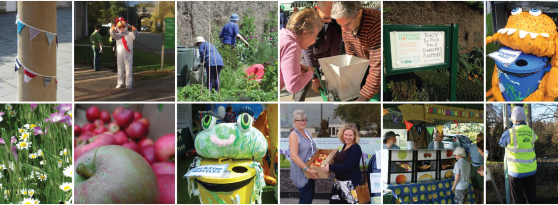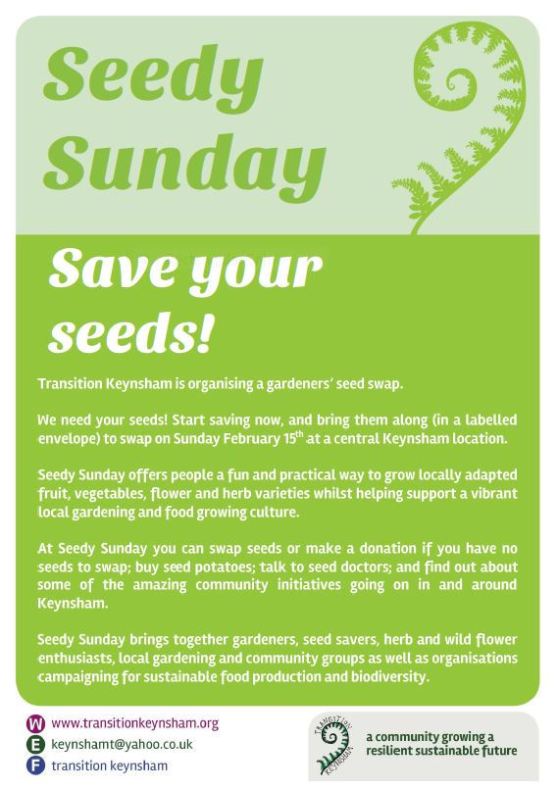Our website has now moved to www.transitionkeynsham.org Please click the link to find out what is going on in Transition Keynsham.
Help Shape Keynsham Station and the train service
Transition Roadshow in Bristol
Newsletter time!
Our latest newsletter has just gone live! You can view it here: February newsletter
Special Edition Newsletter
We’ve handed our newsletter over to the Energy group this month as they have some exiting things to say. Click here to see it!
Our Winter newsletter
Our latest newsletter has just gone online you can read it here, enjoy!
All I want for Christmas…
It’s that time of year again: TV ads pulling our heart strings with cute children and penguins; shop windows flaunting their latest ‘bargains’ and leaflets through the door listing all the festive fayre the supermarkets have to offer.
Don’t get me wrong, I love Christmas! But the amount of stuff we buy at this time of year does make me uncomfortable.
A couple of years ago some truly shocking research about wasted Xmas food was published. In 2012 UK consumers chucked out the equivalent of two million turkeys, five million Christmas puddings and 74 million mince pies.
I wonder what happens to all those unwanted gifts that we feel obliged to give to distant relatives or our children’s teachers every December? Charity shops might benefit to a certain extent, but I bet a lot of it ends up in landfill.
We’re all conditioned to be over-generous at Christmas, but the people who ultimately benefit from this generosity are the shareholders of the large corporations that own our high street shops.
I don’t want to be a killjoy. There must be another way of celebrating the season of giving – a way that protects the environment, conserves our resources and expresses love and consideration to our friends and relatives.
I’ve mined TK members’ top tips for a sustainable Christmas. Here are some of the best ones!
I love this Xmas food planner [http://england.lovefoodhatewaste.com/node/4401] ] from Love Food Hate Waste. It’s got some great ideas about how to reduce the amount of food you buy, and what to do with your leftovers.
Keynsham Caterpillar’s Monica has some great ideas about how to get children more involved in sharing and less in shopping at Christmas. She suggests that they ask for a maximum of three things from Father Christmas, and if they’re expensive, Father Christmas could deliver some to their Grandparent’s house! That way you can share the cost of Xmas, and the children still get everything they really want.
Or you could get the children to participate in initiatives like the Shoe Box Appeal. This not only offers them a chance to give rather than take, it also helps them realise that many children are not as lucky as they are.
Monica advocates using smaller shops. She says that independent shops aren’t always more expensive than the high street retailers. She suggests visiting Etsy [www.etsy.com] and Folksy [www.folksy.com] for independent craft makers who sell direct at reasonable prices.
Charity shops can also be great Aladdin caves – Oxfam in Keynsham is a fine example, selling a fantastic selection of used books and Fairtrade gifts.
TK’s Lucie suggests making gift tags out of last year’s Xmas cards, and saving shiny wrapping paper for kids’ craft boxes.
Other ideas include edible presents (maybe even using foraged food if you’re really organised!); telling your friends and family that you are only buying Xmas pressies from charity shops; giving your time or expertise instead of a present (how about offering a number of babysits to a friend over the year?); or recycling household items into Xmas decorations (check out these fab lanterns [http://thinlyspread.co.uk/2012/11/26/recycled-crafts-christmas-lanterns/])
And finally how about treating your children’s teacher to something a bit different this Christmas? My boys bake them a loaf of bread. It’s always appreciated!
Share your thoughts and tips on a sustainable Christmas in the comments section below.
New yoga classes in Keynsham
We’ve been given the exiting news that we may soon have a new yoga teacher in town.
Sandhaya is currently looking into venues and times in the area. If your interested in finding out more you can contact her on: purpleyoga30@gmail.com. Alternatively you can keep an eye on her website: http://yogakeynsham.webs.com







